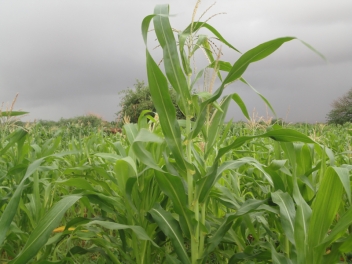 As I flew into the vast and expansive Mandera, I felt a world away from Nairobi from where I had departed – a city full of cars and high rise buildings.
As I flew into the vast and expansive Mandera, I felt a world away from Nairobi from where I had departed – a city full of cars and high rise buildings.
My arrival coincided with a brief rain shower which, I was told, was the first one in two years. Some young children, I was told by a colleague, have never seen rain in their lifetime
Although the rain stopped after a short time, one could see that people in this area do not waste opportunities. By the time the rain stopped, a big bowl of water had been harvested from the roof gutter.
Planning to reach 39,000 people
I had come to Mandera to visit a project in Rhamu, carried out by our partner the Rural Agency for Community Development and Assistance (RACIDA), through which HelpAge is supporting 450 older people for three months with food vouchers and aqua tabs (water purification tablets).
I also came here to plan the next stage of our work – a new project in Mandera to support 2,750 older people receive 10kg of corn soya blend for six months as a response to the current drought. We will also provide these people with items such as jerry cans, blankets and soap. Generally through this project we will reach over 39,000 beneficiaries with food, non-food items, water, hygiene and sanitation interventions.
We left for Rhamu which is 70km away and where we spent the next three days. As we drove through project sites to meet beneficiaries, I kept wondering how nature has been unkind to the people who live in this area.
At some point, while crossing the road, I was told that we were driving across a river bed, although there was no evidence whatsoever that, once up on a time, there was a river.
On the way back from the field one late afternoon, I saw a signpost for a RACIDA irrigation project.
The next day we went to visit it. With funding from Cordaid, RACIDA and its partner, Arid Lands Resource Management Project, has constructed a 920m-long irrigation canal.
Irrigation project has doubled yield
It serves 144 families along the Dawa River who are irrigating around five acres of land and have now doubled their yield. The yield in these communities has significantly increased by 50% (from four to five bags to ten to twelve bags per acre) per season.
Before the canal was constructed, only the farmers adjacent to the bank of the river could irrigate their crops; those on the upland relied on rainwater, and therefore the wet season, only.
The situation has now changed, however, as the farmers are now planting two to three times a year.
Crops such as maize, cowpeas, vegetables and fodder for animals and fruits trees like pawpaw are grown.
An increasing number of farmers who abandoned their farms so many years ago, have taken new initiatives to recultivate their land as a result of this higher output of crop production.
Land under pressure from farming
But this increased demand for farming puts pressure on the existing amount of land.
I asked my colleagues how much of the river’s capacity has been utilised and the answer was that there is huge potential to irrigate a much bigger size of land.
Whilst refreshed by the site of rich green land in the midst of a very harsh dry land, I left thinking about what it will take to break the cycle of drought that claims lives, destroys families, subjects communities to humiliating and undignified search for daily food.
Surely we should be exploiting the natural resource of the Dawa river which provides huge potential to feed the community, break the cycle of deadly hunger and mitigate the effects of drought in future?
Read more about our work to help older people affect by the east Africa crisis
Our sister organisation Age UK has launched an appeal for the drought crisis in East Africa. HelpAge will receive this money to help older people in the region. If you would like to help, please donate to Age UK’s East Africa appeal now.
